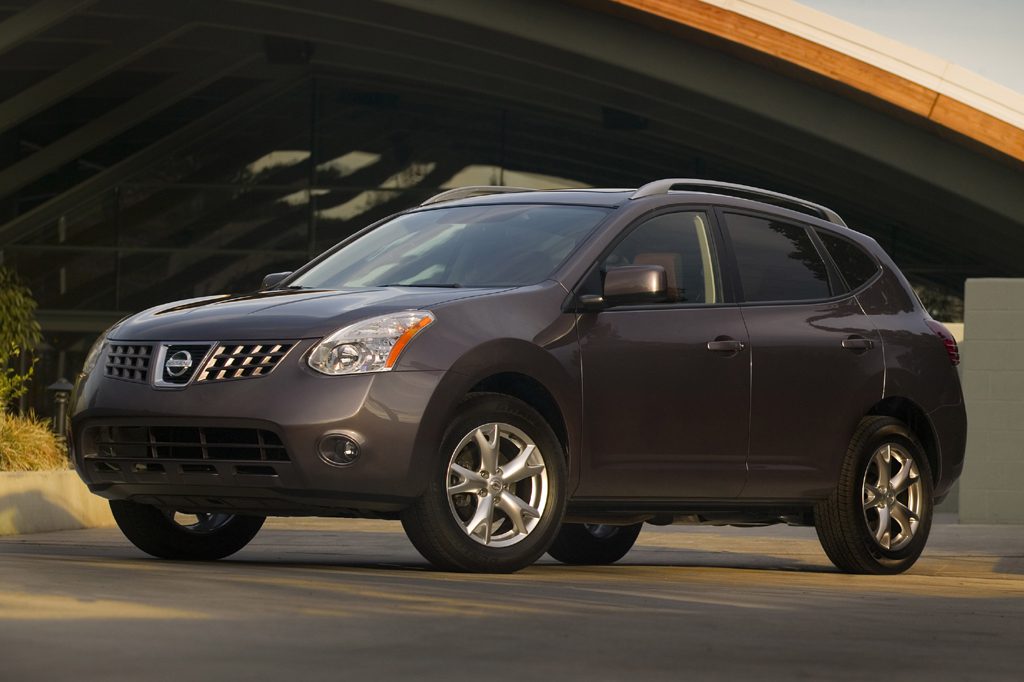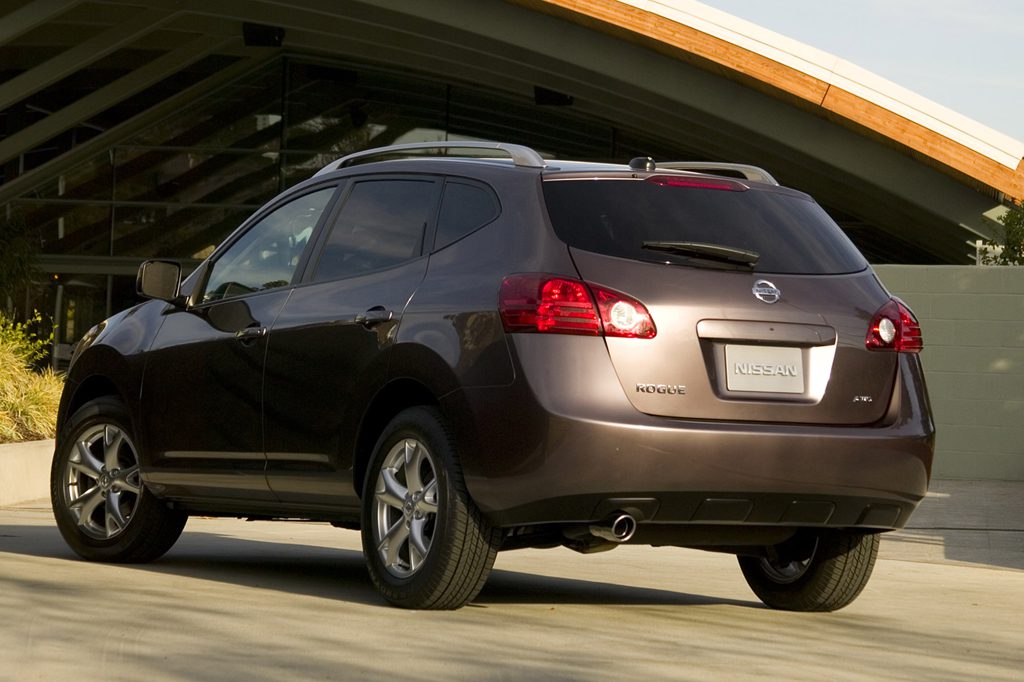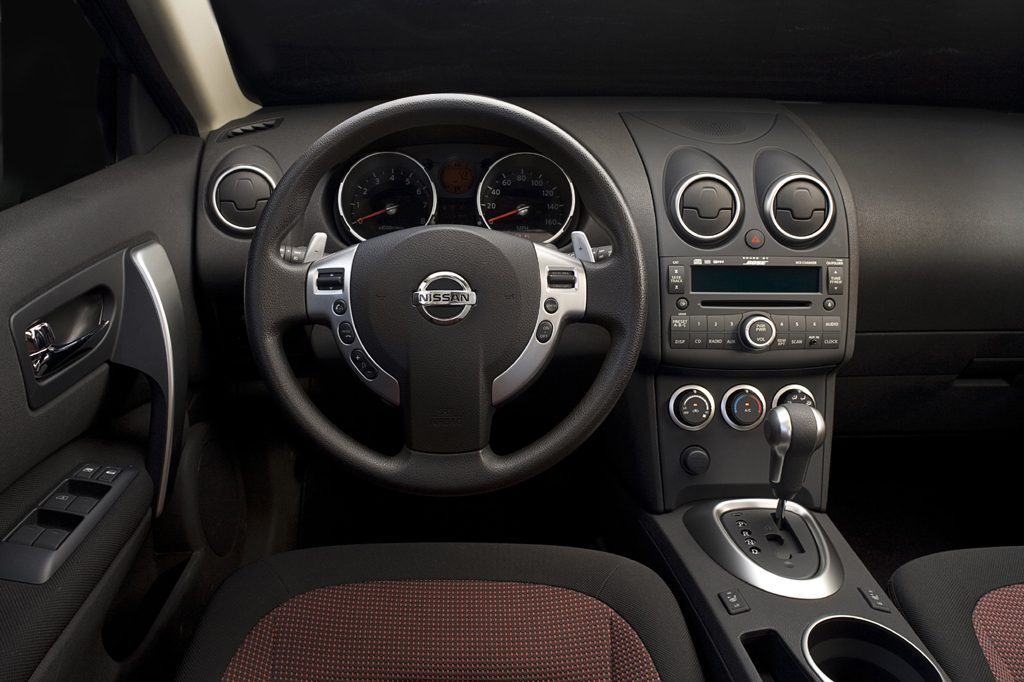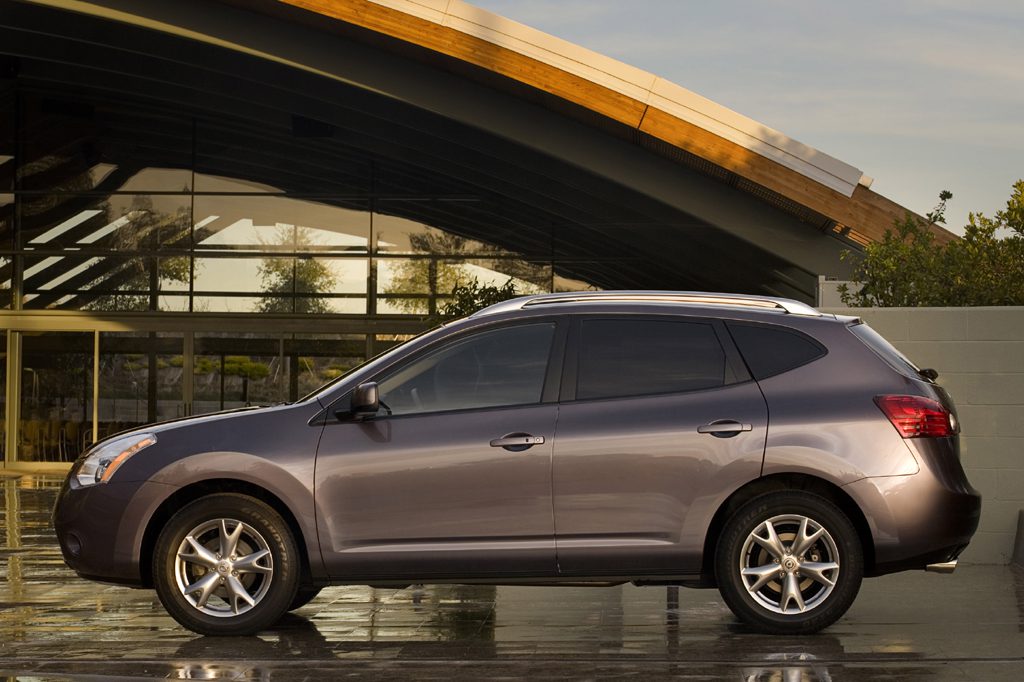| Compact SUV; Built in Japan |
|
|
| Good condition price range: $6,100 – $21,600* |

2008 Nissan Rogue Front

2008 Nissan Rogue Rear

2008 Nissan Rogue Interior

2008 Nissan Rogue Profile
| Pros: |
|
| Cons: |
|
Overall, Rogue’s competitors are quieter and more refined, but this compact Nissan gets points for sleek styling and high levels of interior functionality. If you can live with Rogue’s sometimes-harsh ride, this little Nissan might make sense.
Overview
Launched for the 2008 model year, Nissan’s Rogue was a new compact sport-utility vehicle from the Japanese-brand automaker. Based on Nissan’s Sentra compact sedans, Rogue was a four-door crossover wagon with seating for five. S and SL models were available with front-wheel drive or all-wheel drive (the latter lacking low-range gearing). Sole powertrain consisted of a 170-horsepower 2.5-liter four-cylinder engine with a continuously variable automatic transmission (CVT). SL models were available with steering wheel-mounted paddles for manual shifting.
Standard safety features included all-disc antilock brakes, an antiskid system, traction control, front side airbags, and curtain side airbags. Leather-appointed seating surfaces, heated front seats, a sunroof, and xenon headlights were optional. So were a wireless cell-phone link, keyless entry, and pushbutton engine start. Each Rogue had a 60/40 split-folding rear bench seat and a partitioned glovebox. A pop-up cargo organizer and a trip computer could be installed. A washable, removable storage tray also was optional. Rogue rivals included the Honda CR-V, Toyota RAV4, and forthcoming Volkswagen Tiguan.
Yearly Updates
| 2009 Rogue Several new features and options became available for 2009. New items included automatic speed-sensing door locks, a fold-down front passenger seat, driver’s seatback pocket, and dual-level center console tray. Mood lighting went into SL models, along with an outside temperature display. |
| 2010 Rogue The 2010 Nissan Rogue lineup gained a new sporty trim level. S and SL models were joined for 2010 by the sporty Krom. It had specific body cladding, wheels, and a sport exhaust system. |
| 2011 Rogue The 2011 Nissan Rogue got freshened styling and a slightly revised model roster, as the former SL was replaced by the SV. |
| 2012 Rogue The 2012 Nissan Rogue received only minor trim changes. |
| 2013 Rogue Rogue saw no major changes for 2013. |
